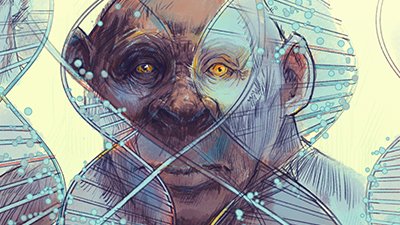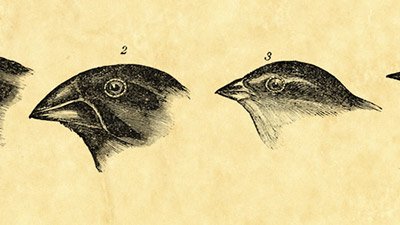
New York Times: “The Mistakes that Argue for Evolution”
New York Times: “The Mistakes that Argue for Evolution” The New York Times–News to Note conversation continues.
Two weeks ago we responded to a New York Times article by Kenneth Chang, one of several articles that appeared in the wake of a visit by non-creationist paleontologists to our Creation Museum. Chang’s article was reasonably well written and quoted from our scientists as well as those visiting. Additionally, we commented on a behind-the-scenes look Chang provided in a Times blog, noting that Chang “seems to misunderstand our message.”
"Why are the vast, vast majority of biologists so convinced of validity of the theory of evolution?”
Last week, Chang acknowledged our comment (again, via a Times blog) and brought up another topic in the origins debate: whether genetics proves that humans and chimpanzees are related. We wanted to (belatedly) respond, since his entry brought a number of new visitors to our site. He writes, “My post today is not about the Creation Museum. Rather, it’s about the opposite: why are the vast, vast majority of biologists so convinced of validity of the theory of evolution?”
(Note that we have responded to the significance of the majority opinion in Does the Majority Rule?.) Chang borrows from well-known evolutionist Ken Miller and recounts the allegation that human chromosome 2 shows evidence that it was once two simian chromosomes that fused together. Apparently, Chang believes this to be the central answer to why the majority of biologists are convinced evolutionists. Thankfully, Chang links to our answer to Miller’s suggestion.
What we want to answer is the analogy that Miller provides, showing how a seemingly open-and-shut case can actually be built upon assumptions. Chang quotes Miller, who said:
Two of my students cheated on a written assignment by submitting the same paper. And I called them in and said, “Guys, I caught you.”
They said, “Well, our papers aren’t that similar. We have different titles. We begin in a different way.”
What they had done was rearrange all of the paragraphs and put in new words and stuff like that. At superficial glance, they looked entirely different. And they said, “Our thinking is the same, because we’re roommates, of course. And we had discussed this, we talked about it, so it’s not surprising we come to the same conclusion. But look, none of the paragraphs in our two papers match.”
And they were right about that. So they said, “How would you think we copied?”
I said, “I ran your papers through a program that looks for unusual matching strings. You guys misspelled the same six words in the same six ways. And when you have matching mistakes, there is no other explanation other than a common ancestor for the paper.” And they broke down, and they threw themselves on the mercy of the court.
There are some topics in the origins controversy that come down to interpretation.
Miller’s analogy is full of assumptions that link back to his perspective on the origin of human chromosome 2. What if the misspelled words are all commonly misspelled or perhaps were technical terms spelled wrong in a class presentation? What if the computer program the professor mentions was flawed? Then the argument that the students cheated would center less on the controversial evidence and more on whether one presupposes that the mistakes are best (or only) explained through cheating. In the end, and without any undebatable evidence, it’s the professor’s speculation against the students’ testimonies.
Likewise, there are some topics in the origins controversy that come down to interpretation, speculation, and metaphysical commitments. On those, it’s fair to say that neither evolutionists nor creationists can convince one another with scientific arguments. For Miller (and especially given the way he frames his story), genetic similarities and common mistakes could only be due to evolution. A creationist can explain similarities through common design, and common mistakes (if they are indeed all mistakes) as perhaps due to a greater likelihood for certain mistakes to appear, or for certain mistakes to persist (such as with commonly misspelled words).
What we can say decisively is this: if Miller’s genetic-similarity story is truly “why . . . the vast, vast majority of biologists [are] so convinced of validity of the theory of evolution,” as Chang writes, then evolution is even more speculative than we thought.
For more information:
Remember, if you see a news story that might merit some attention, let us know about it! (Note: if the story originates from the Associated Press, Fox News, MSNBC, the New York Times, or another major national media outlet, we will most likely have already heard about it.) And thanks to all of our readers who have submitted great news tips to us.
(Please note that links will take you directly to the source. Answers in Genesis is not responsible for content on the websites to which we refer. For more information, please see our Privacy Policy.)
Recommended Resources

Answers in Genesis is an apologetics ministry, dedicated to helping Christians defend their faith and proclaim the good news of Jesus Christ.
- Customer Service 800.778.3390
- Available Monday–Friday | 9 AM–5 PM ET
- © 2025 Answers in Genesis




